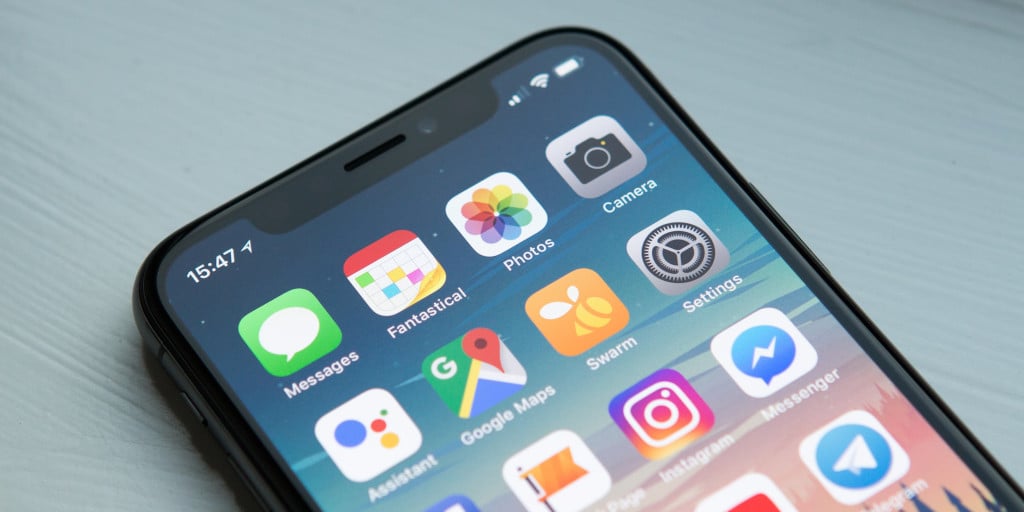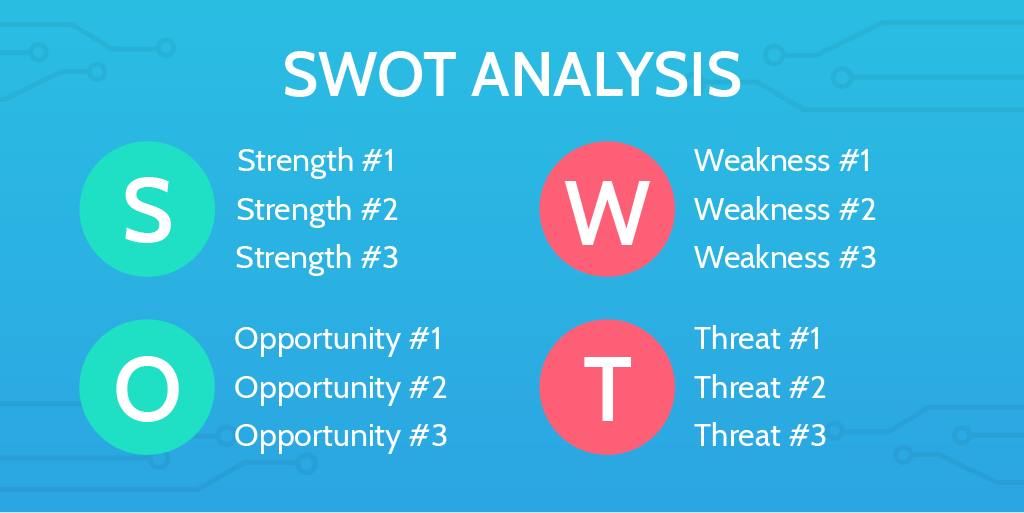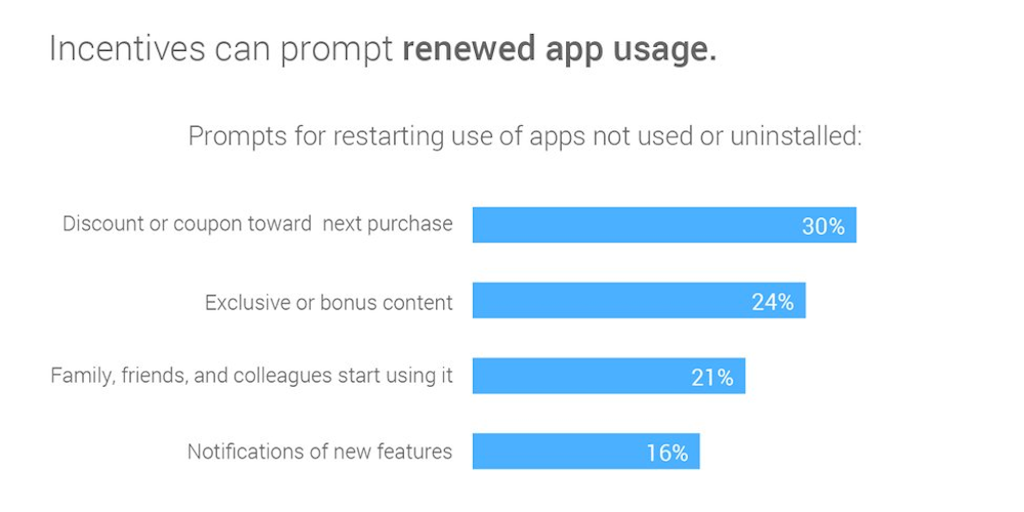
This is a guest post from Emma Lee. Emma Lee is an experienced sales manager and content editor at ProEssayWriter. She is a fan of current technological trends and passionately strives to learn as much as possible about all things SaaS.
As business trends shift from mobile-friendly to mobile-first, more and more businesses are understanding the importance of mobile app marketing. In fact, over 40% of SMEs have a mobile app.
Want to jump on the bandwagon yourself?
It’s definitely a good idea…
But you can’t create an app, publish it, and expect it to work wonders straight away. As a mobile app development company, without a proper mobile app marketing strategy, it will end up in the app graveyard along with thousands of other failed mobile apps!
That’s why, in this guest post for Process Street, I’ll explain what mobile app marketing is. Then, I’ll show you how to prepare a mobile app for launch and market it the right way.
Make your way through the following sections:
- What is mobile app marketing?
- How to prepare your mobile app for launch
- Marketing your mobile app
- Take control of your marketing processes with Process Street!
Let’s get started.
What is mobile app marketing?

Simply put, mobile app marketing is the strategy for ensuring your app gets seen by a large number of people, as well as being used by a large number of people.
Each user has what’s known as a life cycle. A life cycle encompasses everything from the moment they notice your app on app stores, to downloading it and becoming a frequent user. These are known as stages.
Mobile app marketing ensures that the app is the best it can be during each stage of the life cycle.
Easy, right?
How to prepare your mobile app for launch

Made your mobile app?
Good. But if the app’s not in its best shape when you launch, both the acquisition and retention numbers are going to disappoint you.
To avoid disappointment, read the following sections. They’ll guide you through what to do before you launch, in line with mobile app marketing best practices.
Mobile app preparations: Refine your target audience
Learning more about the audience is not only relevant to marketing, but it’s also very important for structuring the app itself.
For starters, your audience’s age (more often than not) dictates their level of digital competence. While you can design for Gen Z under the assumption they will understand jargon like “hamburger menu”, people from the Baby Boomer generation may need clearer semantic guidance.
You also need to consider all the major behavior segments of users, ensuring you have the means of catering to them.
So, loyalty-based users need a loyalty system to reward them for using your brand’s app. Occasion-based users may need a push notification system that fires off at precisely the time they’re most likely to buy. Then, make that push notification system notify the benefit-based users about ongoing discounts, and you’re all set.
Mobile app preparations: Optimize UX
As Gartner stated in 2016, user experience is the basis of competition. This statement still holds true: If you want your app to be used by others, you need to put emphasis on UX first.
Improving your app’s user experience is, in short, essential. Give your app unwieldy navigation and users will choose competitors over you, even though your app may be amazing in all other ways.
If you’re not sure whether your app conforms to proper user experience standards, check Google’s UX basic guidelines.
You can also use Process Street’s trusty UX Audit Checklist to help you, too.
Click here to get the UX Audit Checklist.
Mobile app preparations: Optimize loading speed
Another essential part of this process is making the app run fast. Otherwise, users will run away fast!
In fact, a third of mobile users won’t wait more than 6 seconds for the app to load and will leave immediately. This would be a major blow to the mobile marketing campaign as a whole. So, optimize the app’s loading speed so it’s as fast as possible.
With these segments covered, you’re prepared for your mobile app product launch!
Marketing your mobile app

Let’s move onto the next crucial steps concerning marketing.
If you don’t get your app out there and seen by your audience, most of your customers won’t even install the app as they don’t know it exists. But it’s not just members of your audience you want to market it to; you also want those who don’t know about the app yet to get involved.
It can be a lot to think about, but don’t sweat it.
Here’s what you need to do for effective mobile app marketing.
Mobile app marketing: Create a customer journey map
To understand how your customers interact with your brand and product (in this instance it’s the mobile app), create a customer journey map. The more scenarios it includes, the more useful it is for you, as it provides valuable insight regarding how to market your app better.
Do note that a customer journey map is not a representation of what you want to happen. It maps out what does or could happen, including all the negative experiences customers have.
A customer journey map, then – sometimes written in as the acronym CJM – is a great way to preemptively fix problems that could occur further down the line. So for mobile apps and mobile app marketing, it’s pretty nifty.
For instance, did you know it takes up to 8 touchpoints before a conversion happens? Focus your efforts on discovering what those touchpoints are and mapping them on the customer journey map for their mobile app experience.
The easiest way to do this?
Utilizing the Customer Journey Map Template from Process Street. The template has already been created for you – all you have to do is edit to your liking and, well, use it!
Mobile app marketing: Undergo competitor analysis ️♂️
The next thing on your to-do list is checking out your competition.
By this point, you should know a fair amount about your competitors from doing any research before developing the app. But what you need to do now is acknowledge and understand what the competitor’s advertising strategy is like. And beat them.
Start by look for common ad placements and decide whether you want to advertise on that platform too or not. Here’s an example: If you find that your competitors are placing YouTube ads, it may be a sign that people are responding positively to them. Since YouTube is such a massive platform, it may be a worthwhile idea to invest in ads there as well.
Meanwhile, if the competition is placing banner ads on a couple of niche, targeted websites, you may want to copy their success by finding similar websites. Using the same websites may not be the best idea, though.
To make your analysis more visual, you may want to do a SWOT analysis. SWOT is a simple matrix that compares the strengths, weaknesses, opportunities, and threats of every major competitor.

Want to quickly dive into a SWOT analysis?
Process Street has a SWOT Analysis Template you can use immediately – and it’ll guide you every step of the way.
Click here to get the SWOT Analysis Template.
Plus, there are also more insightful process templates for internal and competitor analysis, including:
Click here to get the Gap Analysis Template.
Click here to get the FMEA Template: Failure Mode and Effects Analysis Template.
Click here to get the VRIO Analysis Template.
Mobile app marketing: Mobile app customer acquisition
Now, let’s discuss the acquisition process.
One portion of app downloads should come via social media. So, if your customer base frequents a particular social media platform, put up ads there. To help you out a little, audiences between the ages of 18 and 35 are more likely to use Instagram, while Facebook is used by almost all age groups except those under 20.
The next big chunk of app downloads should come from your newsletter subscribers. These people already love your brand or content enough to subscribe to a newsletter, so they should be more interested in downloading the app than the average Joe.
Another strategy for customer acquisitions is certainly pricey, but also very effective: Setting up Google Ads for the app. You can create a new ad campaign in your Google Ads account and set the goal to app promotion. You can fiddle with the daily budget limits as you would with a regular ad campaign.
The main difference here is that the ads will be displayed to mobile users and app users instead of in search or on Google Ad Partners websites. You can create a banner that will be displayed there, but it’s better to create a short promotional video and host it on YouTube. Video ads produce more engagement, so it’s worth the effort.
Once you figure out your marketing strategy for the mobile app, supercharge it with referrals. Offer incentives to people to recommend the app to their friends. The easiest way to do this is by offering a small gift or a discount for both of them. After all, who doesn’t love gifts or discounts?!
Mobile app marketing: Mobile app retention
After your acquisition efforts, a stream of customers should be coming in and using the app. However, a lot of them are going to delete it sooner or later. In fact, over 60% of people may do exactly that. That doesn’t mean your app is bad necessarily, you just need to work harder on customer retention.
You can do this by asking people for feedback on the app via a survey. This is so you can see understand the reasons why they deleted it. If there’s a fundamental problem – or problems – with the app, you may need to get back to the drawing table.
In most cases, however, the customers who aren’t using your app actively just don’t want your services. Lure them back in with another discount or a gift. As Google discovered, it’s one of the most potent ways to bring back. It’s also why one-third of former app users will reinstall the app if you offer a coupon for their next purchase.

Have they already deleted the app? Don’t worry; over 40% of app downloads are re-installs. You can remind your audience about the app via another marketing channel. Specifically, email or social media would be ideal for this because they have an amazing ROI!
Mobile app marketing: Monitor performance
So far in this blog post, I’ve discussed how to go about preparing your mobile app and then marketing it effectively.
But all of this work is for nothing if you don’t monitor your mobile app’s performance over time.
- How many people are using the app frequently?
- How many have it installed but aren’t using it?
- How many have deleted it?
- Where are people tripping up?
- What’s causing them frustration?
These are the types of questions you need to think about on a constant basis – and get the data to back up.
With the data on the mobile app’s performance, you and your team can then make the necessary changes so the app is the best it can be. This means that it’ll be appealing, engaging, and easy to use.
Phew.
That’s nearly everything of note covered. There’s just one more thing…
For all of the processes I’ve mentioned in this post – from double-downing on UX design to creating customer journey maps – you’ll want to go about them like a pro.
That’s why you should use state-of-the-art BPM software like Process Street.
Take control of your marketing processes with Process Street!
Process Street is superpowered checklists.
If you document workflows, business processes, and integral procedures as templates, you and your team can launch checklists from them. Checklists ensure that tasks are done correctly, as well as keeping human error at bay.
For a visual explanation, check out their introduction video.
What makes Process Street such a nifty checklist app is its workflow automation features.
These include:
- Stop tasks. ✋
- Dynamic due dates. ⏱
- Conditional logic.
- Task permissions.
- Task assignments.
- Role assignments.
- Webhooks.
- Embed widget.
- Approvals. ✅
For a deeper look at some of these incredible features, just watch the webinar below.
Interested in trying Process Street yourself?
I thought so.
It’s completely free to sign up, so get yourself an account and try the aforementioned checklists. Or, make your own from checklist templates scratch!
When it comes to mobile app marketing, there’s no better business software to help you go about all the necessary processes correctly.
Good luck – I can’t wait to try out your mobile app!
Are you a pro at mobile app marketing? If so, I’m sure the Process Street community would love to read any additional tips and tricks you have. Write your comments in the section below!







 Workflows
Workflows Projects
Projects Data Sets
Data Sets Forms
Forms Pages
Pages Automations
Automations Analytics
Analytics Apps
Apps Integrations
Integrations
 Property management
Property management
 Human resources
Human resources
 Customer management
Customer management
 Information technology
Information technology



Thom James Carter
Thom is one of Process Street’s content writers. He’s also contributed tech-related writing to The New Statesman, Insider, Atlassian, G2, The Content Marketing Institute, and more. Follow him on Twitter @thomjamescarter.